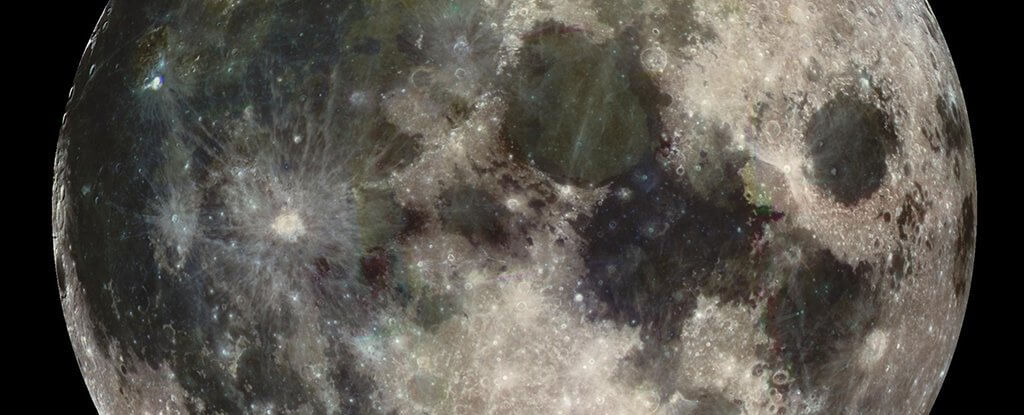
According to one of the most popular models for the formation of the moon, the natural satellite of our planet might appear in the result of collision of a cosmic body with the Earth over 4.5 billion years ago. This body was Theia, a protoplanetary object, with the “germ” of the Earth. The impact resulted in the ejection of matter theis and proto-Earth in space and this material formed the Moon, which explains her amazing geological and chemical similarities with our planet. In the new study, scientists have tried to understand more, what was the fate of our companion after that event.
In the period of kataria (geological EON) the Moon does not look like it looks today. Was a rather hot lump of lava with exotic superdense atmosphere of vapors of silicon and metals. And it was located 10 times closer to the Earth than it is today.
In the study, a group of scientists came to the conclusion that one of the features of the moon may indicate that the Land was devoid of oceans of liquid water during the first 400-500 million years of its existence. And these insights, in turn, impose serious restrictions on the time of the origin of life on Earth. About their work, the scientists shared in the journal Geophysical Research Letters.
As it is now considered to be in the next few million years after its formation, the Moon quickly removed from the Earth as a result of tidal forces, until eventually not left in the orbit where it is today. Subsequently, when the Moon began to always look to the Ground only by one side, this process has slowed sharply, and now she is moving away from our planet at a speed of about 2-4 cm per year.
Zhong and colleagues have uncovered one unusual detail of this process, drawing attention to the most mysterious feature of the moon — its unusual “hump”, located on the equator. This structure was discovered by the French astronomer Pierre Laplace two centuries ago. Laplace noticed that the Moon is “flattened” at approximately 17 to 20 times stronger than he should be, given the speed of its rotation around its axis.
“Equatorial moon “hump” may contain secrets of the early history of the Earth evolution, which we didn’t even know,” says the researcher Shijie Zhong from the University of Colorado at boulder (USA).
Researchers believe that the existence of this structure indicates that in the distant past, the Moon rotated much faster than today. American scientists tried to understand how fast “inhibited” the Moon, by examining how this “hump”, and trying to reproduce its appearance with the help of a computer model of the development of the Solar system.
These observations unexpectedly revealed that the prevailing theory of the rapid deceleration of the moon in the first years of its existence was erroneous — the rotation speed of the companion of the Earth remained high at least for the first 400 million years of its existence. Otherwise, the Moon would always remain “liquid” planet or had a completely different shape and size than today.
Such a scenario, as explained by Jung, is possible only in the case if the Earth was not at that time covered with ocean of water, comparable in size to the current hydrosphere of the planet. This means that water in liquid form on the young Earth were not. She was either absent on it basically, or were born already after the formation of the “hump” of the moon, or was it in solid form, i.e. in the form of ice.
“The hydrosphere of the Earth, if it existed in those days, was completely frozen, with the result that tidal power is practically not “inhibited” the moon. The probable reason for this is, we believe, may be the fact that the Sun shone not so brightly as it is today,” says Jung.
These findings put severe restrictions on the time of appearance of life on Earth and forcing scientists to question the recent statements of geologists that the first living organisms could arise on this planet 4 billion years ago.
The mystery of the moon points to incorrect conclusions about the emergence of life on Earth
Nikolai Khizhnyak